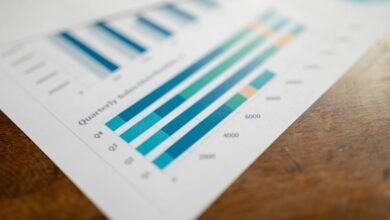Financial Performance Metrics: 8664392565, 8664433138, 8664521144, 8664560677, 8664714741, 8665239144

Financial performance metrics play a pivotal role in assessing an organization’s economic stability. Key identifiers such as return on equity, current ratio, and debt-to-equity ratio provide essential insights into profitability and liquidity. Understanding these metrics can reveal both strengths and weaknesses within a company. As organizations strive for growth, the implications of these analyses become increasingly significant. What strategies might emerge from a thorough examination of these financial indicators?
Understanding Financial Performance Metrics
Financial performance metrics serve as essential tools for evaluating a company’s economic health and operational efficiency.
By analyzing financial ratios and performance indicators, stakeholders gain insights into profitability, liquidity, and solvency.
These metrics facilitate informed decision-making, enabling companies to identify strengths and weaknesses.
Ultimately, understanding these financial tools empowers organizations to pursue growth and maintain a competitive edge in their respective markets.
Key Identifiers and Their Implications
Key identifiers in financial performance metrics include ratios such as return on equity (ROE), current ratio, and debt-to-equity ratio, each serving as a lens through which stakeholders can evaluate a company’s operational effectiveness.
These key performance indicators provide insights into liquidity, profitability, and leverage, enabling informed decision-making.
Understanding these financial indicators is crucial for assessing potential risks and opportunities within the business landscape.
Analyzing Metrics for Strategic Decision-Making
While evaluating financial performance metrics, stakeholders must delve into the nuances of data to make informed strategic decisions.
By establishing performance benchmarks, organizations can identify areas of improvement and growth.
Data visualization tools enhance this process, allowing for clearer insights and trends.
Ultimately, a thorough analysis of these metrics empowers stakeholders to navigate complexities and pursue freedom in their strategic initiatives.
Conclusion
In conclusion, financial performance metrics serve as invaluable tools for organizations striving for economic stability and growth. For instance, consider a mid-sized manufacturing firm that, after analyzing its debt-to-equity ratio, realizes it has over-leveraged itself. By strategically reducing debt and improving liquidity through better management practices, the firm not only avoids potential bankruptcy but also positions itself for expansion. This case underscores the critical role of metrics in guiding companies toward informed decisions that foster resilience and long-term success.




